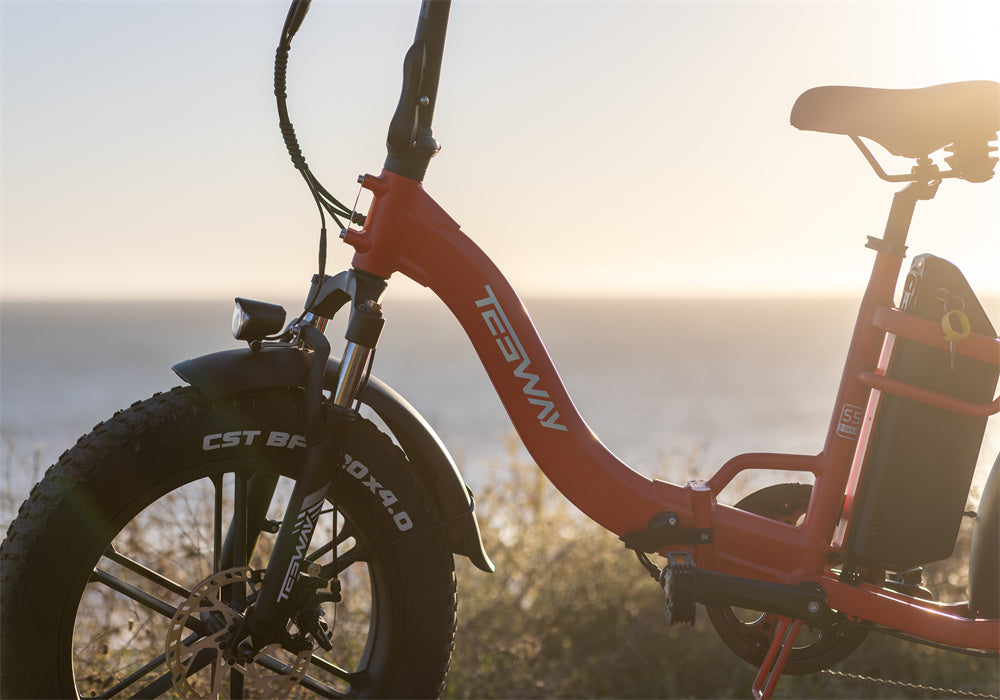Whether you're looking for an efficient way to commute, an adventurous off-road experience, or simply exploring the benefits of electric biking, understanding voltage variations will empower you to make an informed decision tailored to your riding preferences.
Bicycle Metrics
Voltage (V) and ampere-hours (Ah) are essential for any e-bike enthusiast or potential buyer. These two metrics fundamentally dictate an e-bike's performance, range, and overall efficiency.
Voltage (V): The Driving Force
Voltage, measured in volts (V), is often referred to as the "electrical pressure" that drives the flow of electrical current through the e-bike's motor. It is a key determinant of an e-bike's power output and speed capabilities. Higher voltage systems are capable of delivering more power to the e-bike's motor, which translates to faster acceleration and higher top speeds.
Ampere-Hours (Ah): The Fuel Tank
Ampere-hours, on the other hand, measure the battery's capacity. Think of Ah as the "size of the fuel tank"; it determines how long the battery can supply power to the motor at a specific current rate. A larger Ah value indicates a larger energy reserve, which translates to a longer range or riding distance on a single charge.
The relationship between voltage and ampere-hours is critical in defining an e-bike's efficiency and performance. Here’s how they interact:
- Higher Voltage, Higher Performance: Increasing the voltage of an e-bike allows for greater power to be delivered to the motor, enhancing speed and torque. This means that for a given capacity (Ah), a higher voltage system can achieve greater performance.
- Capacity and Range: The capacity of the battery (Ah) multiplied by the voltage (V) gives the total energy content in watt-hours (Wh). This figure represents the actual "fuel" available to power the e-bike. Thus, a battery with a higher Ah rating at a given voltage will provide a longer range.
- Efficiency Considerations: Higher voltage systems can be more efficient. With increased voltage, the current required for the same power output is lower, resulting in less heat generation and lower losses in the wiring and components. This can lead to a more efficient use of the battery's capacity (Ah), potentially extending the range.
Is Voltage Really That Important
You might wonder why everyone talks about voltage when looking at E-Bikes. Well, voltage is super important because it's like the muscle behind your bike's power, speed, and how far it can go. Think of it like this: the higher the voltage, the stronger and faster your bike can be. Bikes with more voltage can climb hills easier and go faster, making your ride more exciting and less tiring.
Also, when your bike has more voltage, it can use energy better. This means you might not have to charge your battery as often, and it could last longer on rides. Plus, if you want to add cool stuff to your bike, like bright lights or a loud horn, a bike with higher voltage can handle these extras better without running out of juice too quickly.

What Voltage Should I Choose
Voltage in an E-Bike essentially determines the power potential of the bike, impacting everything from speed to range.
36V E-Bikes: The Entry-Level Choice
A 36-volt electric bike represents the entry-level option for newcomers to the electric biking world. It's a balanced choice, well-suited for casual biking enthusiasts and people who bike to work or for errands. Choosing a 36V system means you can enjoy a decent speed and a good distance range, making it practical for everyday use without getting into the more complex or pricier options of higher-voltage systems. This level of voltage is also beneficial because it means the bike is lighter, puts less stress on both the battery and the motor, which in turn helps these critical components last longer.
48V E-Bikes: The Power Upgrade
Opting for a 48V electric bike, riders are introduced to a significant increase in power and an overall boost in performance. This voltage level marks a noticeable improvement in how fast you can go and your bike's ability to handle uphill climbs more effortlessly. A 48V system is especially appealing to those who are looking for an electric bike that can handle a variety of terrains and purposes, from commuting in the city to embarking on off-road adventures. The enhanced power doesn't just mean better speed and climbing abilities; it also translates to a longer range when traveling at consistent speeds, making it an excellent choice for those with longer commutes or who enjoy extended rides.
52V E-Bikes: For the Enthusiast
For those who are truly passionate about electric biking and demand the highest level of performance and range, the 52V electric bike is the pinnacle choice. This voltage option offers the fastest speeds, quickest acceleration, and is ideal for high-speed commuting as well as competitive racing. The boost in voltage not only enhances the motor's efficiency, which is crucial for speed and acceleration, but it also means the battery operates more effectively, providing longer life and the ability to cover more distance on a single charge. Riders who seek the ultimate in electric biking technology will find that a 52V system offers an unmatched riding experience, combining exhilarating speeds with the capability to undertake long journeys without the need for frequent recharging.

Will Different Voltages Affect My Distance
A 36V E-Bike typically targets casual riders and commuters who prioritize efficiency and moderate speed over raw power. The battery capacity, measured in ampere hours (Ah), directly influences how far you can travel on a single charge.
|
Battery Voltage |
Ampere Hours (Ah) |
Estimated Mileage (Miles) |
|
36V |
10Ah |
20 - 30 miles |
|
36V |
15Ah |
30 - 45 miles |
|
36V |
20Ah |
40 - 60 miles |
48V E-Bikes are suited for a wider array of activities, including more demanding commutes and off-road adventures.
|
Battery Voltage |
Ampere Hours (Ah) |
Estimated Mileage (Miles) |
|
48V |
10Ah |
25 - 35 miles |
|
48V |
15Ah |
35 - 50 miles |
|
48V |
20Ah |
45 - 65 miles |
For those seeking the pinnacle of E-Bike performance, 52V systems provide superior speed, acceleration, and range. These E-Bikes are ideal for enthusiasts and competitive settings.
|
Battery Voltage |
Ampere Hours (Ah) |
Estimated Mileage (Miles) |
|
52V |
15Ah |
40 - 55 miles |
|
52V |
20Ah |
50 - 70 miles |
Electric Bike Battery Maintenance Tips
Maintaining your electric bike's battery not only ensures a longer lifespan but also maximizes performance on every ride. Here are essential tips for keeping your e-bike battery in top shape:
Charge Regularly: Avoid letting your battery fully discharge. Recharge it after each ride, especially if the battery level drops below 20%. This helps maintain battery health and prevents deep discharge cycles that can shorten its lifespan.
Use the Correct Charger: Always use the charger that comes with your e-bike or one that the manufacturer approves. Incorrect chargers can harm your battery and potentially pose safety risks.
Store Properly: If you're not using your e-bike for an extended period, store the battery in a cool, dry place. Ideally, keep the charge level between 40% and 80% to prevent stress on the battery cells.
Keep It Cool: Batteries are sensitive to temperature. Avoid exposing your e-bike's battery to extreme heat or cold. Extreme temperatures can reduce battery efficiency and lifespan.
Wrapping Up
When picking an electric bike, just go with what fits your needs. Most don't really need a 52V bike. A 48V bike works great for most people. And who makes the best electric bike out there? It's definitely TESWAY! They're known for making top-notch bikes that ride smoothly and last long. TESWAY is the top choice in the US for anyone looking for a great electric bike.







Share:
This Is The Best Hybrid Bikes For Men!
Electric Cargo Bike For Families’ Fun Time?